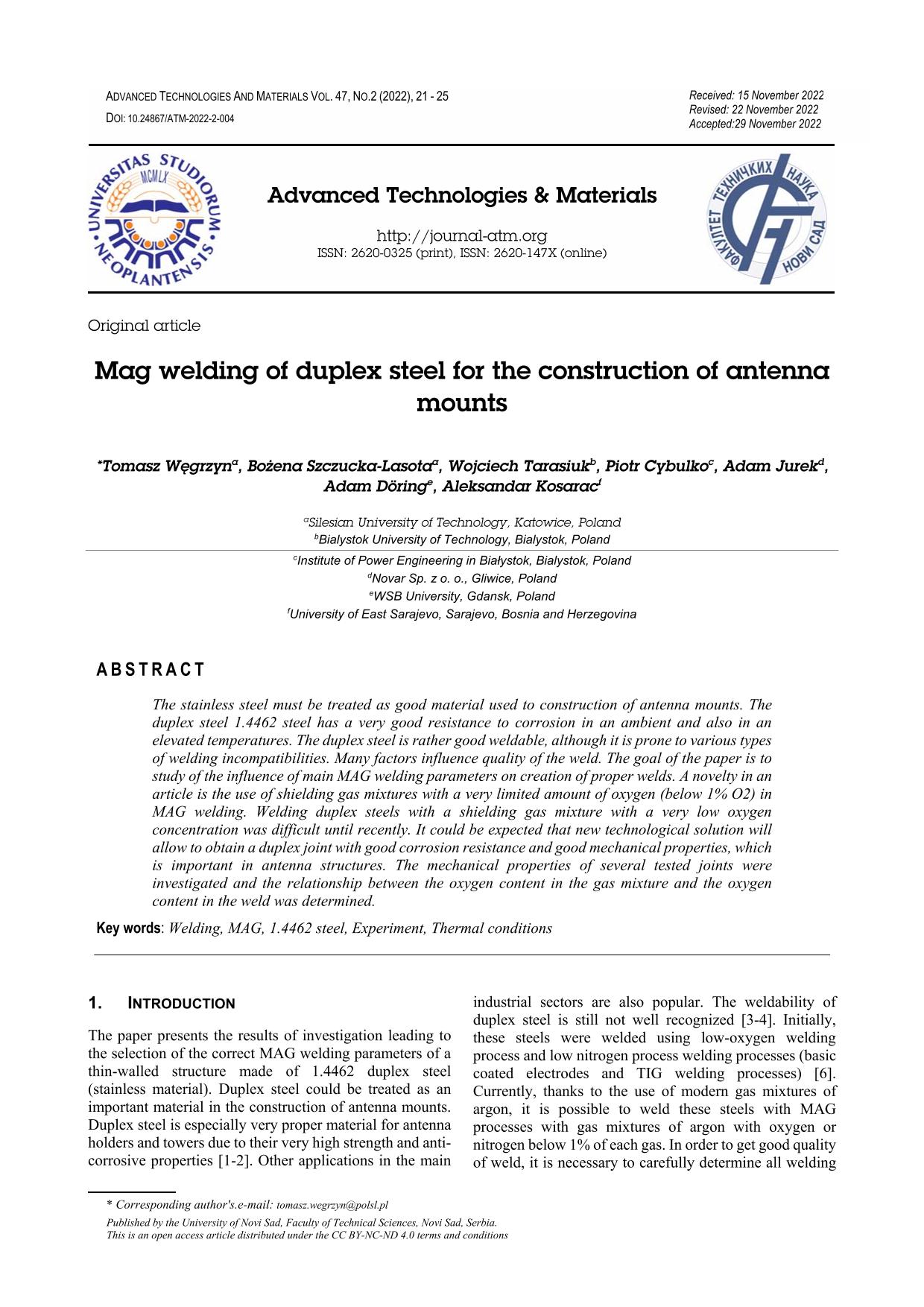
Published 2022-12-20
abstract views: 267 // Full text article (PDF): 99
Keywords
- Welding,
- MAG,
- 1.4462 steel,
- Experiment,
- Thermal conditions
How to Cite

This work is licensed under a Creative Commons Attribution 4.0 International License.
Abstract
The stainless steel must be treated as good material used to construction of antenna mounts. The duplex steel 1.4462 steel has a very good resistance to corrosion in an ambient and also in an elevated temperatures. The duplex steel is rather good weldable, although it is prone to various types of welding incompatibilities. Many factors influence quality of the weld. The goal of the paper is to study of the influence of main MAG welding parameters on creation of proper welds. A novelty in an article is the use of shielding gas mixtures with a very limited amount of oxygen (below 1% O2) in MAG welding. Welding duplex steels with a shielding gas mixture with a very low oxygen concentration was difficult until recently. It could be expected that new technological solution will allow to obtain a duplex joint with good corrosion resistance and good mechanical properties, which is important in antenna structures. The mechanical properties of several tested joints were investigated and the relationship between the oxygen content in the gas mixture and the oxygen content in the weld was determined.

